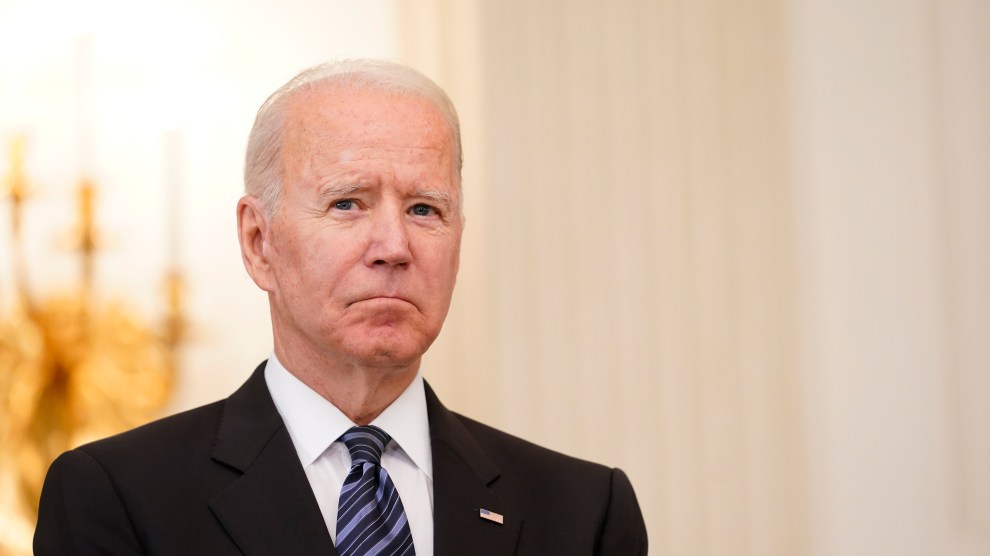
Susan Walsh/AP
Addressing the nation Wednesday afternoon, President Biden unveiled a multifaceted plan to curb gun violence, following a 30 percent increase in homicide rates in 2020. Biden promised to crack down on firearms dealers, expand community-based programs, and work to provide jobs and housing for formerly incarcerated people.
Despite the announcement’s progressive tilt, the announcement makes clear that Biden wants to increase funds for the police.
To “help address violent crime,” the plan notes, the Treasury Department allows for the $350 billion in state and local funding in the American Rescue Plan to be used on cops. Local officials can hire more police officers, prosecute gun crime, and invest in technology that aids in policing. A fact sheet for Biden’s violence reduction plan states that “this strategy will use the Rescue Plan’s historic funding levels and clear guidance to help state, local, territorial, and tribal governments get the money they need to put more police officers on the beat.”
“This is not a time to turn our backs on law enforcement or our communities,” Biden said in his presser.
This approach concerns some activists. While many praise the community-based aspects of Biden’s plan, they worry that adding “more police officers on the beat” could result in disproportionate arrests in communities of color. The rise in mass incarceration was directly tied to tough-on-crime policies, which were often framed as a solution to rising violence.
“We have concerns about elements of the plan that could very well lead to the further criminalization of communities of color,” Udi Ofer, the director of the American Civil Liberties Union’s Justice Division, said in a statement. Ofer lauds Biden’s emphasis on funding community programs to address the root causes of gun violence, but he points out that government efforts targeting drug and weapons traffickers often result in the overpolicing of low-income communities of color. Take, for example, Washington, DC, where a 2019 plan to crack down on gun violence was selectively enforced in three predominantly Black neighborhoods, rather than citywide.
As my colleague Samantha Michaels wrote last year, increased policing isn’t the only way to effectively crack down on gun violence. Oakland has seen success in reducing shootings through a program, Operation Ceasefire, that identifies those most at risk of committing violent crimes and offering them “access to housing, jobs, medical care, and life coaches, plus a monthly stipend if they accomplish goals like signing up for health insurance, opening a savings account, and staying in touch with probation officers.”
“Moments like these have fueled our nation’s mass incarceration crisis,” Ofer writes. “This time around, we should be guided by evidence of what works, and not let the politics of fear drive our nation’s criminal justice policies.”
Correction: A previous version of this article misstated the amount of funding available. It is $350 billion, not $350 million.














